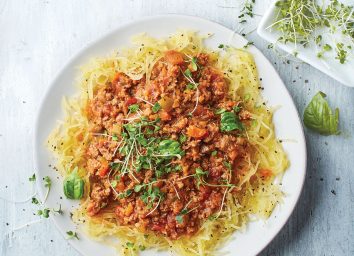The Best Foods on Store Shelves to Shrink Belly Fat, Says Dietitian
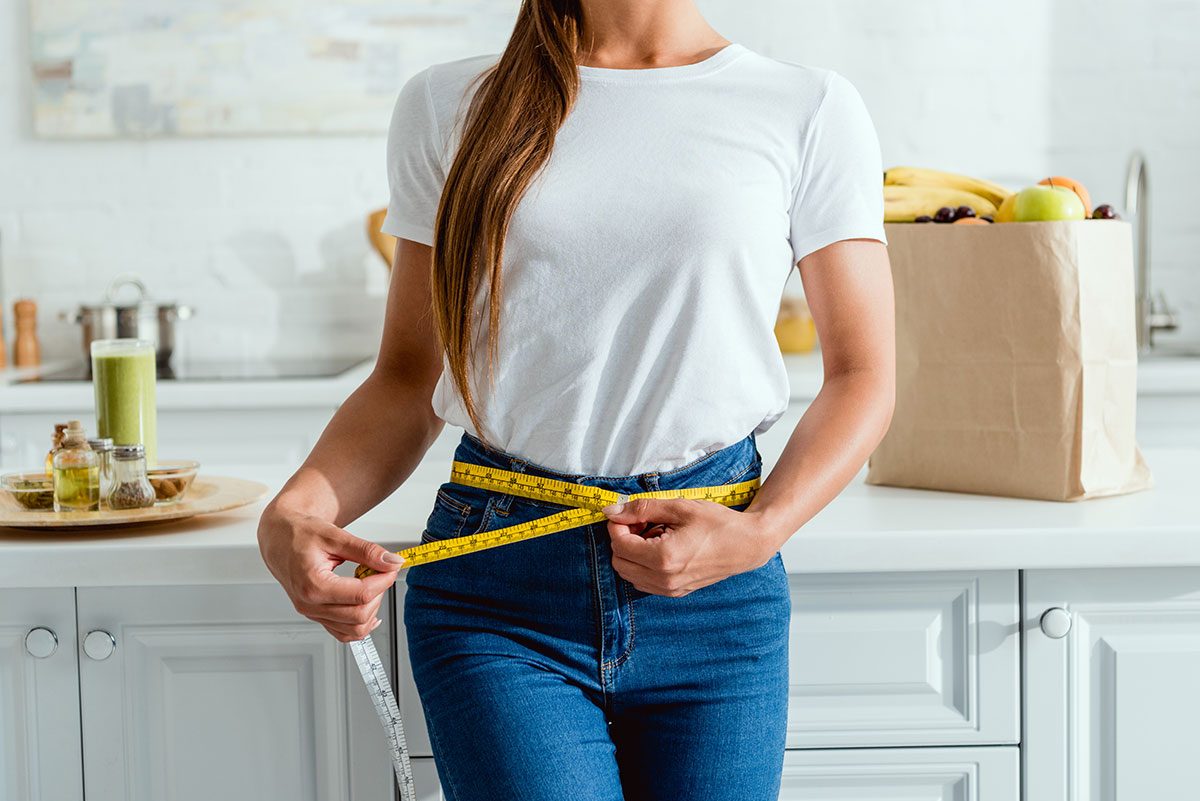
Some amount of bloating is normal. You might experience bloating after a salty meal, a change in water intake, high stress levels, or when traveling. Bloating tends to make us feel a little less confident in our skin and may worsen overall body image.
While you can't completely eliminate bloating, we can add certain foods into your diet to help reduce the frequency and severity.
Soluble fiber is one of the easiest ways to help smooth out digestive issues. It's known for its "binding effect" that helps keep digestion regular as well as excrete toxins, cholesterol, and excess waste that needs to be removed from our system.
Initially, increasing high fiber foods may add to some digestive discomfort and even some bloating—especially if your system isn't used to this amount of roughage from foods. However, over time, a consistent high-fiber diet will decrease bloat and help keep your digestion regular.
Take a look at common foods that are high in soluble fiber, and how to include more of them to beat the bloat! Then, be sure to check out our list of 22 Meals to Melt Belly Fat in 2022.
Oats
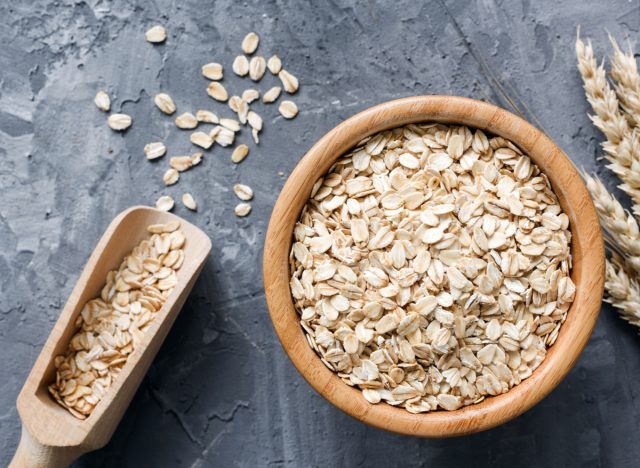
Oatmeal is well known for its heart-healthy benefits, but soluble fiber is the little-known compound behind oatmeal's health perks. One cup of cooked oats delivers four grams of total fiber and two grams of soluble fiber. That's nearly 15% of the daily recommended fiber goal of 25 grams of fiber per day for women!
Searching for more recipes to incorporate oats and reduce belly bloat? We have you covered with these 51 Overnight Oat Recipes.
Chia seeds
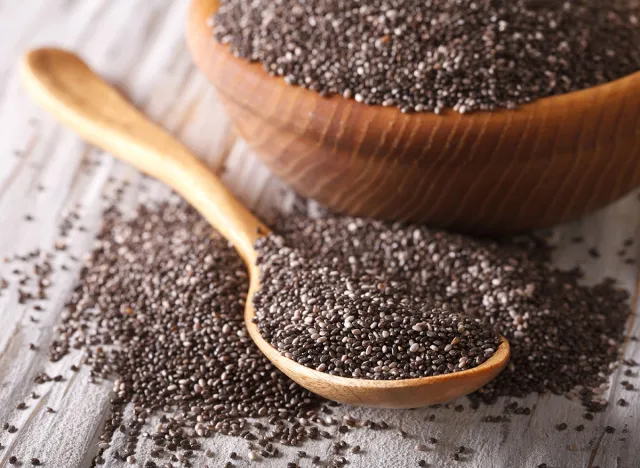
Chia seeds are loaded with soluble fiber. One serving (just two tablespoons) contains nearly 10 grams of total fiber!
Chia seeds have added health benefits that support healthy digestion as chia seeds tend to absorb water within the digestive tract and help keep you regular. They also provide a substantial dose of heart-healthy omega-3's, too!
Pro tip: Because chia seeds absorb fluid, soaking them in water before you eat them can help keep digestion running smoothly.
Prunes
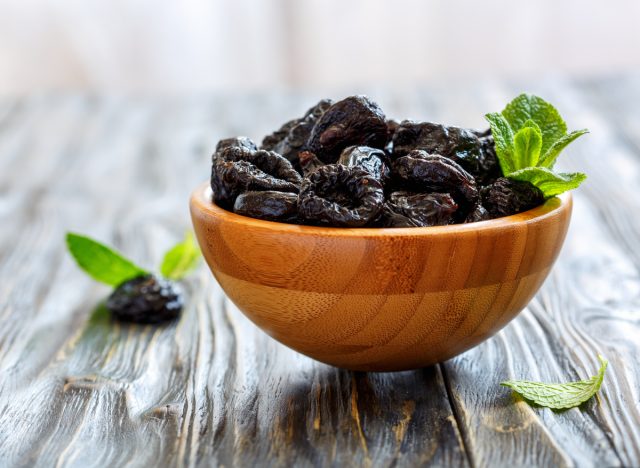
Three prunes have a whopping four grams of total fiber with more than half from soluble fiber. Prunes make an easy snack when paired with nuts or cheese, and can also provide a quick fiber boost when added into yogurts, smoothies, or on top of cereals.
Whether you like your plums fresh or dried into prunes, you'll love these Secret Effects of Eating Plums in addition to reducing your waistline.
Black beans
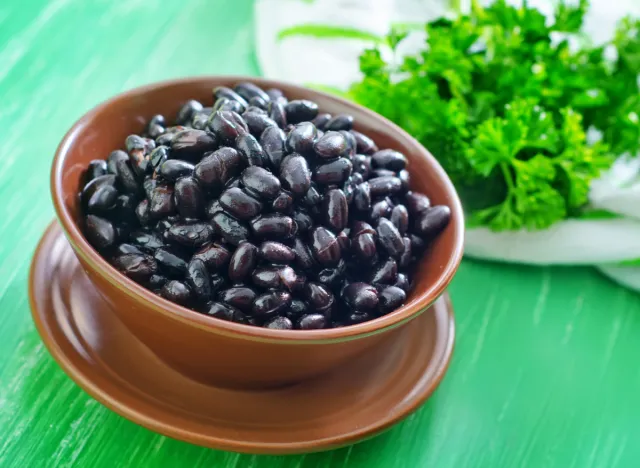
All types of beans and lentils are soluble fiber superstars, but black beans especially take the gold here. A one-cup serving of black beans provides nearly 15 grams of total fiber with a third of it coming from soluble fiber!
Looking to beat the bloat by adding beans into your diet? This One Trick Will Make Your Beans Taste Better.
Barley
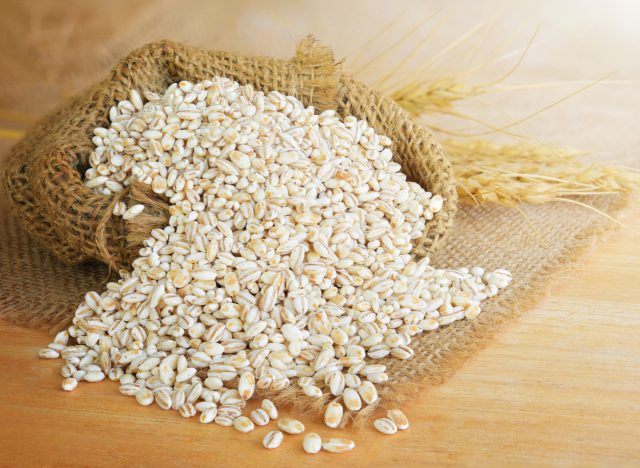
Barley, a whole grain in the wheat family, provides serious health benefits attributed to its high fiber content. One cup of cooked barley delivers six grams of total fiber in addition to its cholesterol-lowering beta-glucan content.
Barley cooks similarly to brown rice and can be quickly added into soups, stews, salads, or as a quick side dish.
Thinking that carbs like barley won't support your weight loss efforts? Think again! Here are the Most Underrated Carbs for Weight Loss.


